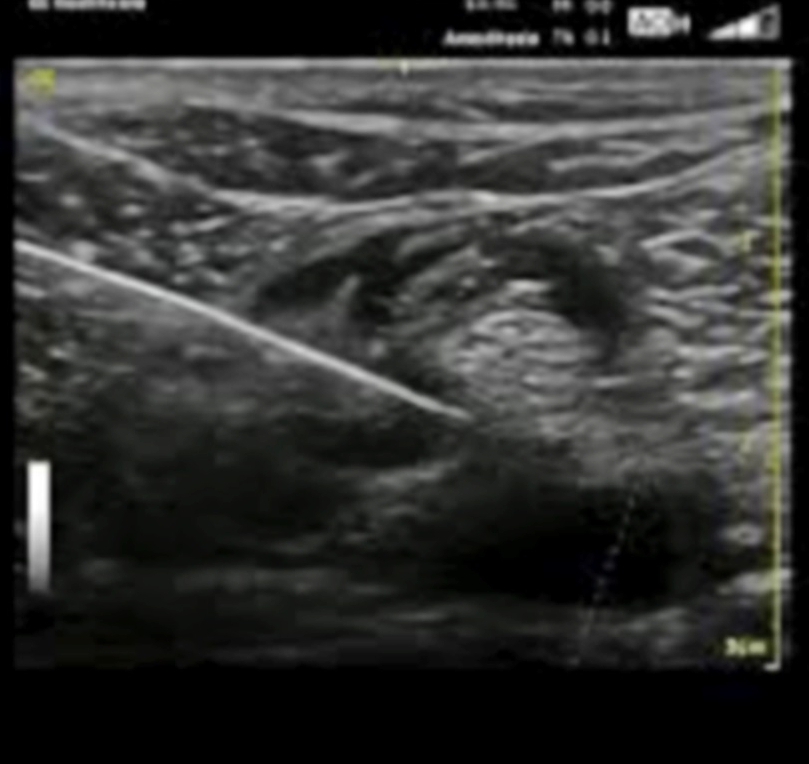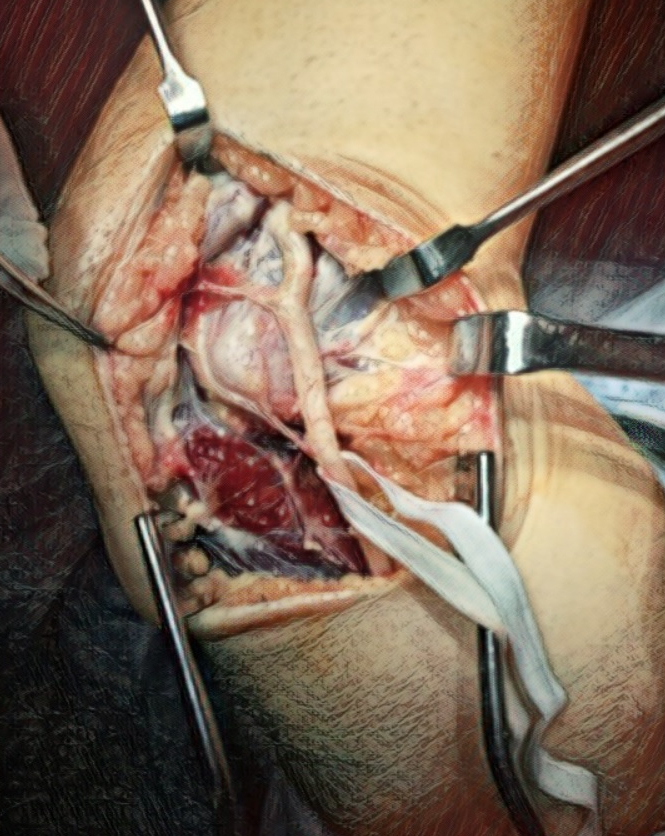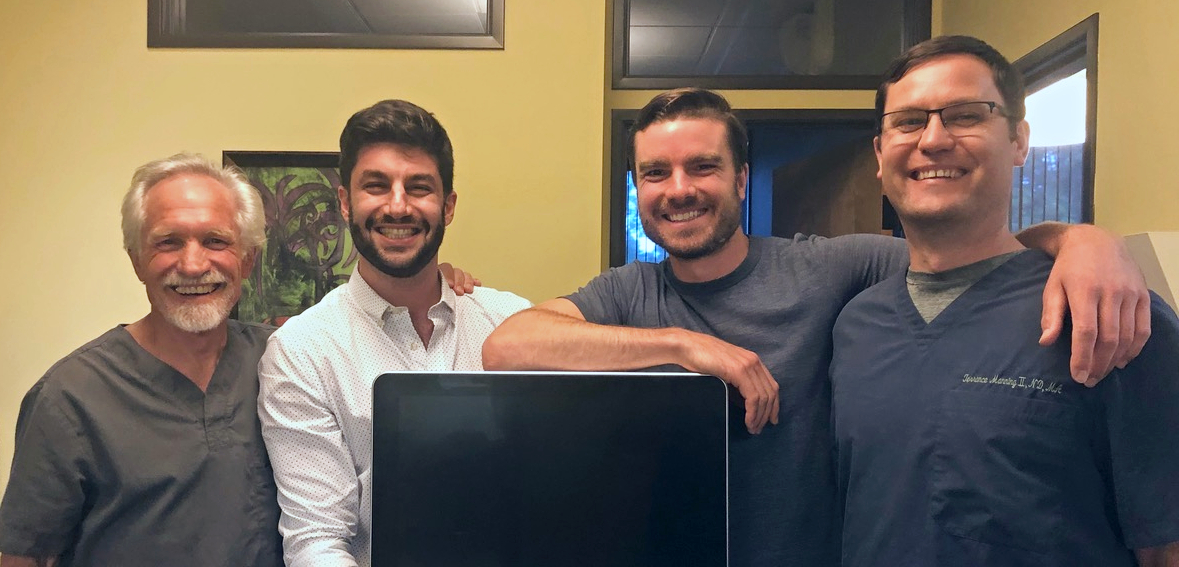Pictured above L to R: Dr. Noel Peterson, Dr. Ezekial Mailand, Dr. Samuel G. Oltman, Dr. Terrance Manning, II
A Workshop for Doctors Hosted by Oregon Regenerative Medicine
by Dr. Noel Peterson, ND, DAAPM, ORM Medical Director
For me, there are few things better in life than spending a day perfecting new skills with twelve of my best doctor friends from throughout the United States. That’s why I invited my dear friend and colleague, Dr. Ezequiel Mailand to come all the way from Rosario, Argentina, to present an all-day workshop on peripheral nerve entrapments and ultrasound-guided hydrodissection.
Nerve entrapment often goes unrecognized as one of the primary causes of chronic musculoskeletal (MSK) pain. Athletes and other people performing repetitive overhead motions (e.g., weight lifting, baseball, tennis, swimming, carpentry) are especially susceptible to upper-extremity nerve entrapment.
The conventional treatment of nerve entrapment is surgical release of the nerve from the surrounding tissue. Non-surgical treatment of nerve entrapment uses ultrasound imaging to guide a needle tip to the site of nerve compression, where a gentle stream of fluid dissects the nerve away from the surrounding tissue.
Ultrasound-guided nerve hydrodissection is an emerging specialty in orthopedic medicine and is largely unknown in the US.

Dr. Ezequiel Mailand is recognized in Argentina as an expert in the art of non-surgical release of peripheral nerve entrapments using ultrasound image guidance. The technique he teaches is referred to as transcutaneous needle hydrodissection under ultrasound guidance.
Using a specialized, high-resolution ultrasound to diagnose nerve entrapments, we can visualize the tip of a needle used to hydrodissect the nerve away from the surrounding tissue. This relieves the entrapment and restores the nerve to normal function, all without surgical cutting. PRP (platelet-rich plasma) is often used to enhance repair of the damaged nerve. This relieves the entrapment and restores the nerve to normal function, all without surgical cutting. PRP (platelet-rich plasma) is often used to enhance repair of the damaged nerve.
Benefits of Ultrasound-Guided Hydrodissection
High-resolution ultrasound has significant advantages over magnetic resonance (MRI) imaging in the evaluation of peripheral nerves, including:
- Better, equal specificity and greater soft-tissue resolution and specificity than MRI imaging
- Cost-effectiveness
- Real-time and dynamic imaging
- Ability to scan an entire extremity quickly and efficiently
- Any abnormal findings can be easily compared with the non-involved (contralateral) side
Avoid Invasive Surgery

Ultrasound-guided hydrodissection has significant advantages over surgical release:
- Hydrodissection is far safer than surgery
- Performed in the office and requires no downtime or recovery time
- Can be performed under local anesthetic
- Far more cost-effective
- Produces no residual scarring
This intensive, all-day workshop provided the 12 physicians in attendance with practical and thorough training in the clinical presentations, key anatomy, sonographic findings, accurate diagnosis, and effective treatment of upper extremity peripheral nerve entrapments using transcutaneous needle hydrodissection under ultrasound guidance. All of us gained individualized, practical and clinically relevant experience in nerve entrapments. Our thanks to Dr. Ezequiel Mailand for coming all the way from Argentina to share his knowledge and expertise.



